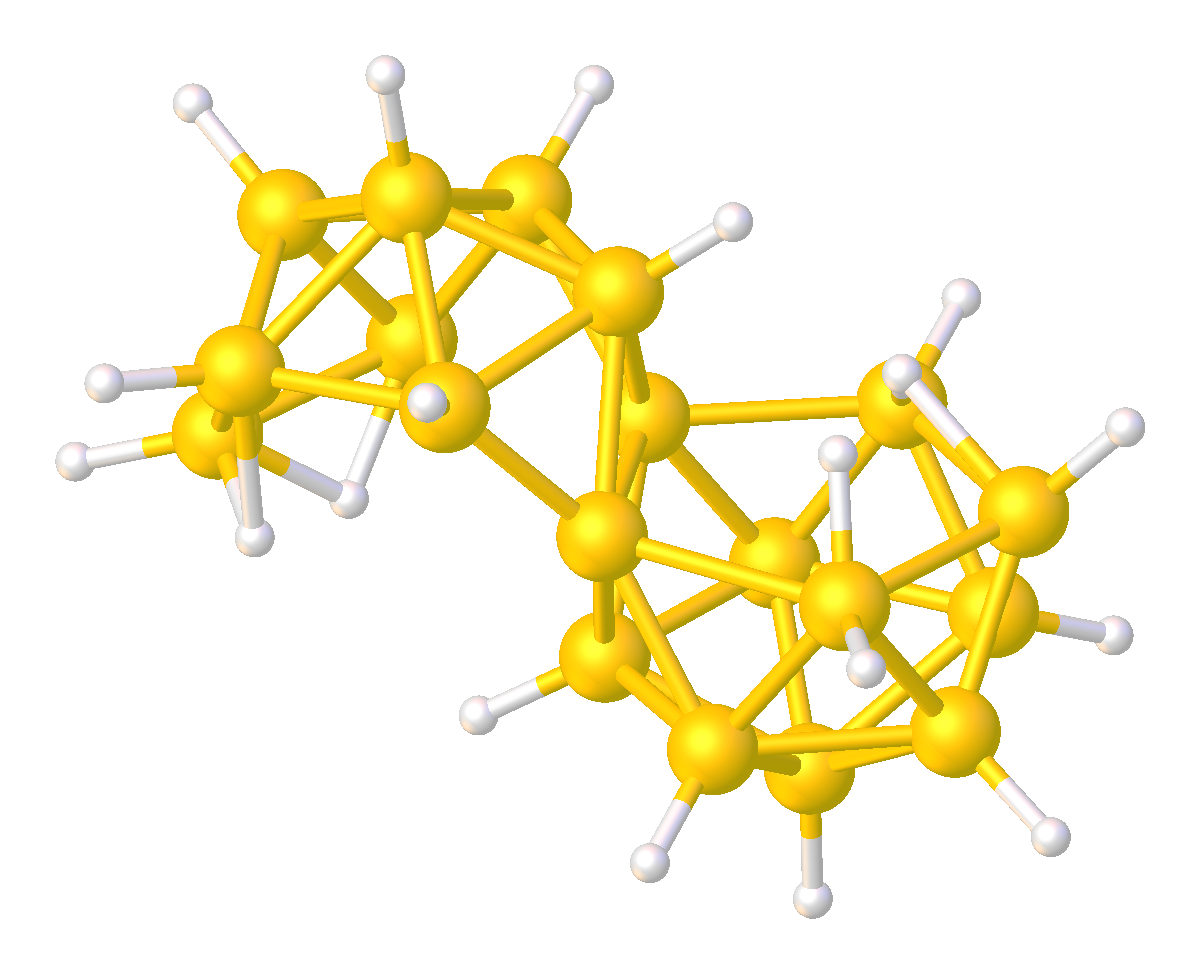|
Hexaborane(10)
Hexaborane, also called hexaborane(10) to distinguish it from hexaborane(12) (B6H12), is a boron hydride cluster with the formula B6H10. It is a colorless liquid that is unstable in air. Structure Hexaborane(10) is classified as a ''nido''-cluster. The boron atoms define a pentagonal pyramid, with four bridging hydrogen atoms and six terminal ones. The point group of the molecule is ''C''s. Preparation and reactions A laboratory route begins with bromination of pentaborane(11) followed by deprotonation of the bromide to give rB5H7sup>−. This anionic cluster is reduced with diborane to give the neutral product: :K rB5H7 + 1/2 B2H6 → KBr + B6H10 It can also be generated by pyrolysis of pentaborane(11). B6H10 can be deprotonated to give 6H9sup>− or protonated to give 6H11sup>+. It can act as a Lewis base A Lewis acid (named for the American physical chemist Gilbert N. Lewis) is a chemical species that contains an empty orbital which is capable of accept ... [...More Info...] [...Related Items...] OR: [Wikipedia] [Google] [Baidu] |
Boron Hydride Cluster
Boron hydride clusters are compounds with the formula or related anions, where x ≥ 3. Many such cluster compounds are known. Common examples are those with 5, 10, and 12 boron atoms. Although they have few practical applications, the borane hydride clusters exhibit structures and bonding that differs strongly from the patterns seen in hydrocarbons. Hybrids of boranes and hydrocarbons, the carboranes are also well developed. History The development of the borane hydride clusters resulted from pioneering work by Alfred Stock, invented the glass vacuum line for their study. The structures of the boron hydride clusters were determined beginning in 1948 with the characterization of decaborane. William Lipscomb was awarded the Nobel Prize in Chemistry in 1976 for this and many subsequent crystallographic investigations. These investigations revealed the prevalence of deltahedral structures, i.e., networks of triangular arrays of BH centers. The bonding of the clusters ushered in ... [...More Info...] [...Related Items...] OR: [Wikipedia] [Google] [Baidu] |

